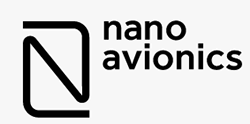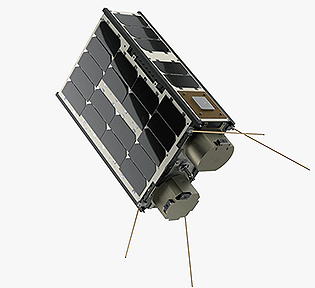

NanoAvionics has been awarded a publicly-tendered contract to supply the M6P 6U smallsat bus to the Norwegian University of Science and Technology (NTNU).
The M6P’s unique competitive advantages will deliver high performance, the pointing accuracy and multi-year service life required of NTNU’s HYPer-spectral Satellite for ocean Observation (HYPSO). Once in SSO, the M6P-based HYPSO will monitor algal blooms and other aspects of ocean health in an autonomous synergy with robotic agents at the Norwegian coast.

Artistic rendition of the Multi-Purpose Nano-Satellite Bus (M6P). Image is courtesy of NanoAvionics.
HYPSO will be one part of NTNU’s ambitious multi-agent marine observations system. NTNU will combine observations from the orbiting satellite with those made by autonomous vehicles above, upon and beneath the ocean’s surface. The resulting studies of algal blooms and other biological activity in the ocean will support environmental monitoring and the management of marine resources as well as contribute to our understanding of climate change’s effects on Earth’s oceans.
NanoAvionics’ M6P bus provides the maneuverability and the pointing accuracy HYPSO’s observations demand. A 500-kilometer SSO will enable the smallsat to image regions of interest, such as along the coast of Norway. HYPSO must then perform a maneuver to allow the craft's hyper-spectral imager record data across hundreds of narrow bands in the visible and near-infrared spectrum.
NanoAvionics will configure the HYPSO with the M6P’s most advanced attitude control system to enable the precise pointing required to maximize the observations’ spectral resolution. In addition to providing the M6P nano-satellite bus, NanoAvionics will provide NTNU with training and engineering support services in advance of the planned launch in late 2019 or early 2020.
HYPSO will be the first in a series of nano-satellites NTNU plans for its oceanographic research, following a constellation of remote-sensing focused nano-satellites which will form a space-asset for the multi-agent architecture.
The NTNU project team consists of 20 MSc/BSc students as well as eight Ph.D. Candidates.
NTNU AMOS - Centre for Autonomous Marine Operations and Systems, coordinates the HYPSO project. The project is financed by NTNU, NTNU AMOS, The Norwegian Research Council and The Norwegian Space Centre.
Executive Comments
NanoAvionics CEO Vytenis J. Buzas said that he is honored that NTNU selected NanoAvionics to supply their ocean observation mission. The M6P’s unique technical capabilities and the NanoAvionics team’s expertise are competitive advantages the firm delivers to every project. In this case, this proved a good match for the challenging nature of the HYPSO mission. Everyone at NanoAvionics is excited about this partnership and looks forward to contribute to NTNU’s innovative approach to oceanography. With the successful launch of HYPSO, NanoAvionics will have demonstrated the flexibility and capability of the M6P smallsat bus and will have also established a basis for future collaboration with NTNU
Evelyn Honoré-Livermore, Ph.D. Candidate and Project Manager for the HYPSO mission, added that all are happy and excited to be working with NanoAvionics on this project. Their knowledge and support in this project enable NTNU to find the optimal solutions to meet the mission objectives. NanoAvionics has shown a great willingness to support the students directly and helping them learn more about space engineering and develop multidisciplinary skills. NTNU values this highly, as one of the main goals of the project is to develop future space engineers.

